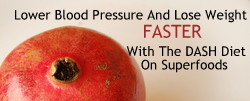How To Start Cooking Foods By The DASH Diet
Part 3 from the series “Introduction to the DASH diet” By Dr. Donna Schwontkowski, D.C., M.S. Nutrition
Part 1, Why did my doctor recommend DASH?
Part 2, How do I start with the DASH diet?
How to Cook Like a Gourmet Chef Without Years of Training
Assuming you have very little knowledge about cooking, here are a few guidelines about each food group on the DASH Diet.
Meats
One solution to insuring your sodium levels remain low in accordance with the DASH Diet (around 1500-2300 mg sodium per day) is to bake raw meats without using any seasoning mixes that list salt as an ingredient. This works because most prepared foods add salt. You still need flavoring so try no-salt seasonings from Costco.
Seasoning Mixes
Noting all the ingredients in these mixes, start mixing the same herbs together yourself. The best way to do this is to start out with one part of every herb. For example, if an herb seasoning mixture contains marjoram, basil, oregano and thyme, mix one teaspoon of each of these herbs. Mix them together in a small bowl and then sniff the mixture to see how it smells. Do all the herbs blend together in one pleasant aroma? Or is there one herb that is overpowering the others? If one herb is overpowering the others, add another teaspoon of each of the other herbs to dilute the mixture.
Sprinkle your mixture of herbs onto the meat before cooking. Cover meats during the cooking process so that flavors remain in the food.
Muffins and Pancakes/Waffles
Try to reduce these in your diet. But for those that you keep, the biggest change in this category of foods is that you’ll make your own recipes and always leave out the salt. This really doesn’t affect the flavor all that much.
On a very strict DASH Diet, margarine is allowed along with vegetable oil. However, in the last decade, the research against margarine and vegetable oil is mounting. Margarine fat blocks the receptor sites in the body for omega 3 fats, which are essential for decreasing inflammation in the body. It may be another decade before governmental agencies change this in the DASH Diet.
Vegetable oil is polyunsaturated fat, which is not a stable fat and instead, encourages free radical production. Free radicals can contribute to damage within your blood vessels. More and more dietitians and well-educated nutritionists are opting for allowing a little bit of butter while decreasing margarines and vegetable oils in the diet. Olive oil is monounsaturated and creates only a fraction of the free radicals as vegetable oils. Replace vegetable oil in recipes with olive oil, and always try to decrease the overall amount of fat in your diet. Cutting the amount of fat in recipes to half will still leave you with a good-tasting food.
Baking soda may also be high in sodium, so get a sodium-free baking soda to use instead. Read the label; you’ll find that the label may recommend you double the amount of baking soda in a recipe when the sodium-free version is used.
Use applesauce instead of extra fat in recipes, and cut the sugar level in half. You won’t even notice the difference after a few days. Taste buds adapt to recipes that aren’t as sweet or not as salty in about four days. Thus after about a week on the DASH Diet, you’ll feel as if the old foods you used to eat are too salty and too sweet.
When you make these simple changes, your recipe will always be a success as long as you always mimic the general consistency of the batter. For example, pancake and waffle recipes are generally thinner batters than muffin recipes. Keep them thin if they are supposed to be thin; keep them thick if they should be thick. If the batter is too thick, add a little water or liquid such as milk to thin it. If the batter is too thin, add a little more whole grain flour but only add an extra tablespoon at a time.
For variety, add some frozen berries to pancakes and waffle recipes to sweeten them up a little bit.
Pastas
The easiest way to reduce sodium in your diet with pastas is to stay away from canned pasta and always check the label of freshly made pastas that are available at the grocery store. When you do cook your own pasta on top the stove, cook them without adding extra salt. Salt tends to prevent clumping so stir the pasta more often.
Breads
This change is easy. Read labels at the store and replace your present processed, high sodium bread with one that is lower in sodium and contains whole grains.
Once you master the changes in meats and grains, the others are very easy to master. You’ve made some of the biggest changes with these simple substitutions.
Continue to the Part 4, Sodium, Potassium, And Sugar In The DASH Diet
